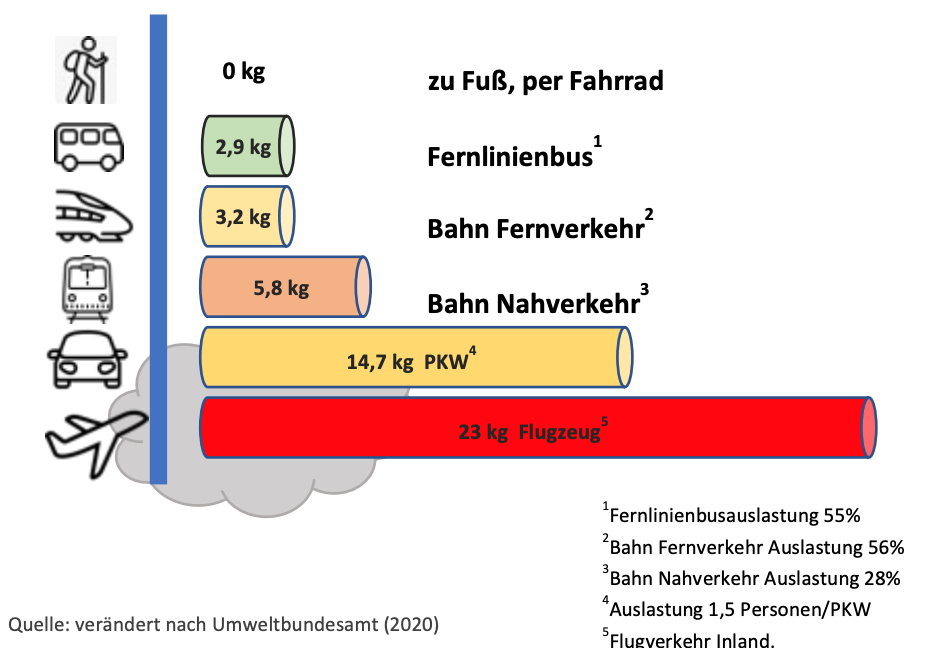)
Comfortable and more climate-friendly to your vacation destination
75% of a trip's CO2 emissions are generated on arrival and departure. So this is where the greatest potential lies for reducing the CO2 footprint of a vacation. But how and, above all, how to do this while still taking the customer's wishes into account? Answers to these questions were provided for interested travel agents in our 45-minute webinar on the topic with travel agency coaches René Morawetz and Saskia Sánchez.
)
Greatest potential for reducing climate impact when traveling to and from
In our 45-minute webinar, our coaches René and Saskia raised awareness among travelers and showed them how they can make their journey more climate-friendly. Flying causes the most CO2 emissions (23 kg per 100 passenger kilometers), closely followed by driving a car with 14.7 kg, while long-distance rail travel causes just 3.2 kg of CO2. For this reason, you should try to reach your destination by train or bus. On the Berlin - Paris route, long-distance rail travel causes only 10% of the CO2 emissions of air travel (265 kg compared to 26 kg)!

Greatest potential for reducing climate impact when traveling to and from
In addition to actively contributing to climate protection, rail travel offers further advantages:
Relaxed travel, as there are no security checks or long waiting times at the gate
More legroom
No restrictions on luggage
No expensive transfers from the airport to the city
And if the customer wants or has to fly? Air travel can also be made more climate-friendly with just a few tips:
Adjusting the duration of the trip: The further away the destination, the longer the stay on site. Advantage: The customer has less stress and more time on site and returns more relaxed.
Choose direct flights: Take-off and landing consume a lot of kerosene, so use direct flights if possible and travel to the airport by train within Germany.
Use more climate-friendly airlines: If a route is offered by several airlines, the most climate-friendly airline should be used. In the atmosfair Airline Index, the climate protection organization evaluates and ranks 190 airlines annually according to their climate efficiency in the categories short-haul (up to 800 km), medium-haul (up to 3,800 km) and long-haul (from 3,800 km). The most climate-friendly airlines include, for example, TUIfly, Sunexpress and Condor.
Offset CO2 emissions: Customers can invest in reputable climate protection projects to offset the CO2 emissions caused by their flight. The same amount of CO2 produced by the flight (e.g. through kerosene combustion and contrails) is saved elsewhere. This involves investing in solar, hydropower, biomass or energy-saving projects that do not cause or reduce CO2 emissions.
You can find all the tips presented in the handout, which can be used as a practical aid at the counter.
